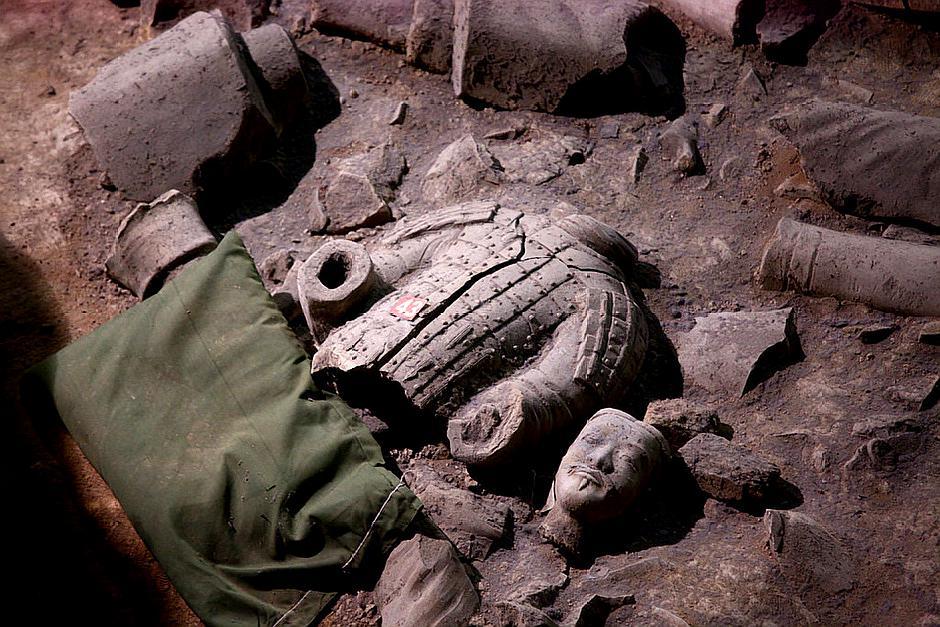
Who Destroyed the Terracotta Army?
The Terracotta Army, an awe-inspiring collection of life-size terracotta figures buried with Qin Shi Huang, the first emperor of China, stands as a testament to the grandeur and ambition of the Qin dynasty. Yet, these silent sentinels bear the scars of time, many found damaged and broken. While natural factors have played a role in their deterioration, the question of who inflicted the most significant damage, particularly by fire, remains a subject of historical debate. One name that often emerges is Xiang Yu, a pivotal figure in the fall of the Qin dynasty.
Xiang Yu and the Fall of the Qin Dynasty
Xiang Yu (232-202 BC) was a prominent rebel leader who played a decisive role in overthrowing the Qin dynasty. After Qin Shi Huang's death, widespread rebellion engulfed the empire, fueled by resentment towards the Qin's harsh rule. Xiang Yu emerged as a powerful military leader, leading the rebel forces to victory in several crucial battles. His triumph culminated in the capture of the Qin capital, Xianyang, marking the end of the Qin dynasty.
Historical Accounts and the Allegations against Xiang Yu
The accusation of Xiang Yu being responsible for setting fire to the Terracotta Army stems from historical accounts, particularly Sima Qian's "Records of the Grand Historian" (Shiji), a monumental work of Chinese history. The Shiji describes how Xiang Yu, upon entering Xianyang, unleashed his forces to loot and burn the Qin palaces. The flames are said to have raged for three months, signifying the thoroughness of the destruction.
This account serves as the most direct historical evidence linking Xiang Yu to the destruction by fire found at the Terracotta Army site. However, it's crucial to note that the Shiji, while a valuable historical source, does not explicitly state that Xiang Yu burned the Terracotta Army itself. The text mentions the burning of the "Qin Imperial Palace" and the "Underground Palace of Qin Shi Huang Mausoleum," but it remains unclear whether this encompassed the pits containing the Terracotta Army.
Examining the Evidence: Was the Terracotta Army Targeted?
The lack of direct evidence in historical sources leaves room for different interpretations. Some scholars argue that the scale of the destruction described in the Shiji, along with the evidence of fire damage on the terracotta figures, makes it plausible that the Terracotta Army pits were not spared. They suggest that Xiang Yu, in his quest to eradicate symbols of Qin power, may have ordered the torching of the army as a symbolic act of revenge and annihilation.
However, others contend that the Terracotta Army, being located outside the main palace complex and the emperor's burial mound, might not have been a primary target. They point out that the Shiji focuses on the destruction of prominent Qin structures, suggesting a deliberate targeting of symbols of imperial power and wealth. It is possible that the Terracotta Army pits, while located within the larger mausoleum complex, were not considered significant enough to warrant focused destruction.
Furthermore, archaeological evidence presents a more nuanced picture. While fire damage is evident on some terracotta figures, not all figures or pits exhibit such damage. This suggests that the fires, whether accidental or intentional, might not have spread uniformly across the entire site.
Conclusion
The question of who destroyed the Terracotta Army, and the extent to which Xiang Yu was involved, remains a historical puzzle with no definitive answer. While historical accounts link him to the widespread destruction of Qin structures, the evidence regarding the Terracotta Army itself is inconclusive. The Shiji's silence on the specific targeting of the army, coupled with the varying degrees of fire damage observed at the site, suggests a more complex scenario than a straightforward case of deliberate arson.
It's plausible that fires, whether intentionally set or accidentally ignited during the chaos of the Qin capital's fall, spread to the Terracotta Army pits, causing localized damage. However, without more concrete evidence, it remains difficult to ascertain the precise extent of Xiang Yu's involvement in the destruction of this remarkable historical treasure.
Q&A
Q: Did Xiang Yu burn the Terracotta Army?
A: Historical accounts are unclear. While they document widespread burning by Xiang Yu's forces in Xianyang, they don't explicitly mention the Terracotta Army.
Q: Is there evidence of fire damage at the Terracotta Army site?
A: Yes, some terracotta figures exhibit fire damage, but it's not uniform across the entire site.
Q: Why is Xiang Yu suspected of destroying the Terracotta Army?
A: He is linked to the burning of Qin structures in Xianyang, and some speculate this destruction may have extended to the Terracotta Army as a symbolic act.